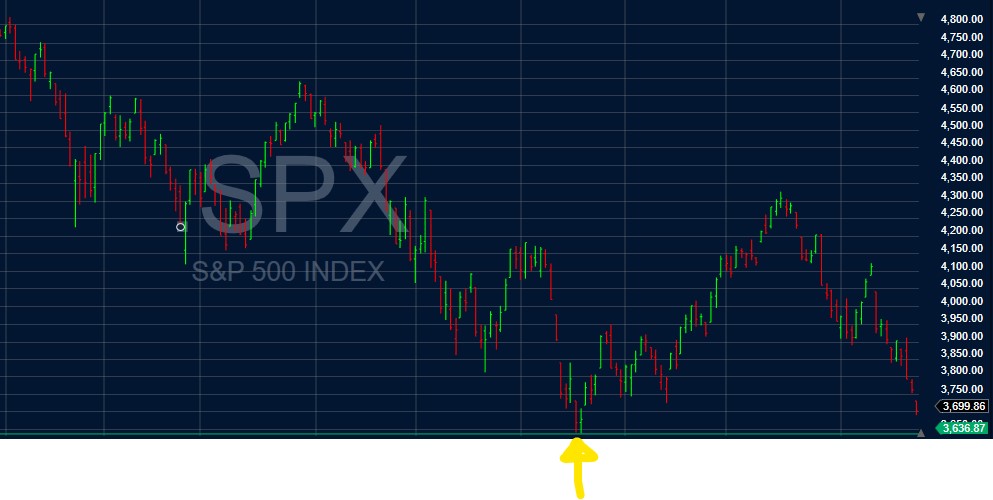As I am sure you are aware, the market is down over the last few weeks, and we are now approaching the lows from mid-June. The thing about down markets is that you never know you have hit the bottom until you can see it in the rear-view mirror. And the other thing about down markets is that lows are often re-tested, but again you can only see that in the rear-view mirror.
Below is a chart of the S&P 500 index from January 2022 through today. You can see we had two trading days that touched lows of S&P 3,636 in the middle of June.

The market then moved up for a week or so, then a few down days, then a much larger move up to S&P 4,300. I was hoping that move higher was enough to keep us from re-testing the June lows. But alas that does not seem to be the case. September and October tend to be weak months to begin with, that coupled with the fact that there is little news coming out of the market other than bad inflation/interest rates news, combine to produce what we are seeing today. Third quarter earnings reports begin in mid-October.
While the inflation and interest rates issues are important, I do not think the economy is anything like it was during the pandemic, or 2008/2009, or 2002/2003. Therefore, I think the negativity we are experiencing today is way over done.
At the beginning of the pandemic, the market’s move lower was much larger than this one, but it also recovered much more quickly. The market started to roll over in early February, hit the lows in March, and fully recovered by July 2020, although there was tremendous variation across different sectors of the economy.
In 2008/2009, we experienced a full-fledged credit crisis that involved the largest banks and financial firms – money market funds were breaking the buck, large financial institutions were being saved by the Federal Reserve, and unemployment was skyrocketing. Today, the stress we see in the system is not bleeding into the banks and the likelihood of such is very low. Further, the labor market is still quite strong.
In 2002/2003, company valuations were through the roof especially for technology companies that were not making any money. Today, technology companies are some of the most profitable companies in the world. For example, Apple generated a net income (profit) of almost $100 billion over the past 12 months and Microsoft generated roughly $73 billion. Those numbers are staggeringly large and quite different from what we saw during the tech bubble. Further, valuations are much more reasonable than before.
As always, I continue to look toward corporate earnings and the ability of companies to return value to shareholders through dividends and stock buybacks as a guidepost for the health of corporate America. While corporations are undoubtedly facings headwinds, I believe that most are navigating the turbulence and will emerge stronger when things finally settle down.
If you have questions or would like to talk, please let me know.






